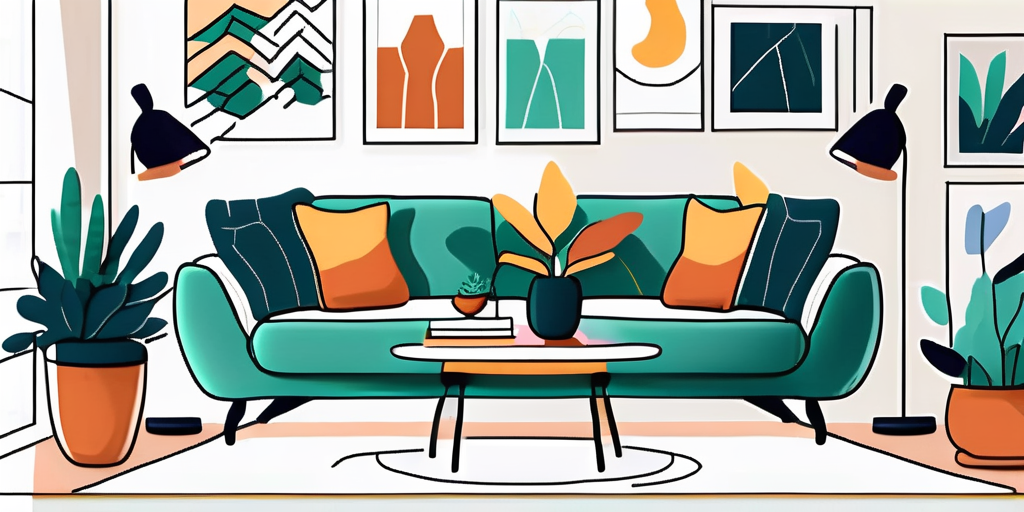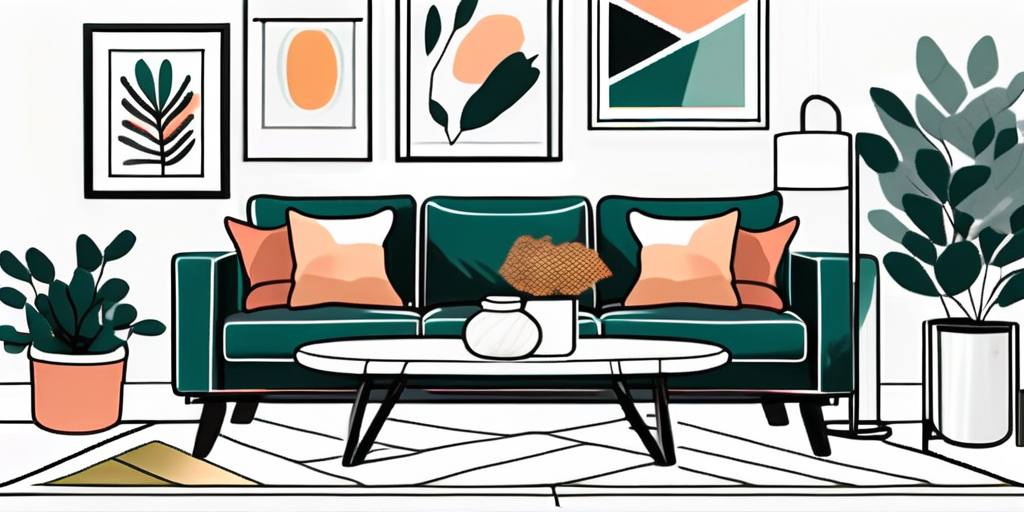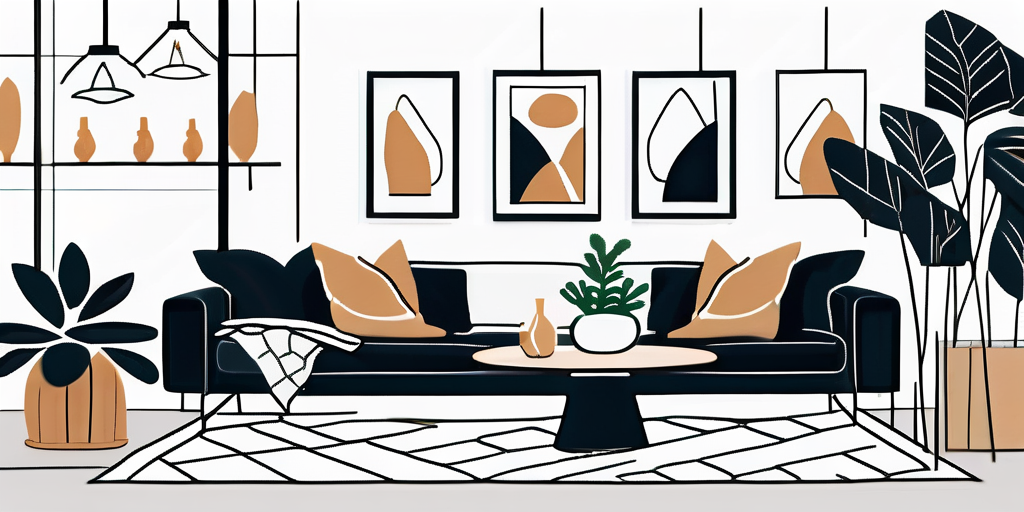DIY Home Staging Tips: Transform Your Space on a Budget
In today's competitive real estate market, home staging has become an essential strategy for sellers looking to maximize their property's value. Often, the process can feel overwhelming and expensive. However, with some creativity and resourcefulness, you can achieve stunning results on a budget. This article will guide you through understanding the basics of home staging, planning your project, implementing low-cost strategies, and finishing with tasteful touches that captivate potential buyers.
Understanding the Basics of Home Staging
Home staging is the art of preparing a property for sale in a way that enhances its appeal to prospective buyers. This process not only focuses on cleaning and decluttering but also showcases the home’s most attractive features. A well-staged home allows buyers to envision themselves living there, making it a crucial aspect of selling successfully.
The Importance of Home Staging
The significance of home staging cannot be understated. A study by the National Association of Realtors found that staged homes sell for an average of 17% more than their unstaged counterparts. Consider a scenario where a three-bedroom home in a desirable neighborhood languishes on the market for months. With a minimal investment in staging, including rearranging furniture and adding fresh accessories, the property can capture buyers’ attention and potentially close above asking price.
Key Elements of Effective Home Staging
Effective home staging incorporates several key elements. First, it’s important to declutter every room. A clutter-free space allows buyers to perceive the dimensions and potential usage of each area. Additionally, neutral colors in furniture and decor help prospective buyers imagine their own style within the home.
Another crucial aspect is lighting. Well-lit spaces feel welcoming and spacious. Consider using a mix of ambient, task, and accent lighting to create an inviting atmosphere. Lastly, don't underestimate the power of a well-maintained outdoor area; first impressions matter, and curb appeal sets the tone for the tour ahead.
Planning Your Home Staging Project
Before diving into staging your home, a solid plan is essential. This involves setting a realistic budget and prioritizing the areas of your home that require the most attention.
Setting a Budget for Home Staging
Your budget for staging can vary significantly depending on the size of your home and the extent of changes required. However, a common approach is to allocate between 1% to 3% of your home's value for staging costs. For instance, if your home is worth $300,000, consider spending around $3,000 to effectively stage it.
Remember, you don't need to spend that amount all at once. Prioritize purchases and focus on impactful changes. For example, allocating funds for professional cleaning can drastically improve a home's appeal, leaving a positive impression on buyers.
Prioritizing Areas for Staging
When staging your home, it’s important to focus on areas that are most impactful. The living room, kitchen, and primary bedroom typically have the greatest influence on a buyer’s decision.
- Living Room: This is often the heart of the home, showcasing the property’s overall style and comfort.
- Kitchen: A clean, organized kitchen is a top priority for many buyers. Small upgrades, like hardware replacements or added greenery, can go a long way.
- Primary Bedroom: A serene, inviting bedroom should feel like a retreat. Fresh bedding and strategic decor can make a significant difference.
Low-Cost Home Staging Strategies
Staging doesn’t have to come with a hefty price tag. Utilizing creative strategies can be both cost-effective and impactful. Consider the following approaches as you embark on your low-cost staging journey.

Utilizing Existing Furniture and Decor
Rather than investing in new furniture, leverage what you already own. Rearranging existing pieces can create a new flow and feel to spaces. For example, transform a spare bedroom into an attractive office by simply adding a desk and removing personal items. Additionally, borrowing furniture from friends or family can provide a fresh look without a financial commitment.
Incorporating Affordable Accessories
Accessorizing is an effective way to enhance your home’s appeal. Candles, throw pillows, and potted plants can uplift a room’s aesthetic without breaking the bank. Stores like thrift shops and online marketplaces often have unique finds at a fraction of the price. Consider using colorful art pieces or mirrors to create visual interest and depth, drawing buyers’ eyes across the space.
DIY Home Staging Room by Room
Now that you have groundwork laid out, let's look at room-specific strategies for staging your home on a budget.

Staging the Living Room on a Budget
For the living room, focus on creating an inviting atmosphere. Start by decluttering the space, removing excess furniture, and opting for a streamlined look. Adding fresh, soft lighting and a few decorative throws can transform a basic room into a cozy gathering space. If you own a coffee table, try refreshing it with a stylish centerpiece of books or flowers.
Budget-friendly Tips for Staging the Kitchen
A clean kitchen is critical in the buying process. Clear countertops of unnecessary items, and consider repositioning frequently used appliances to create a less cluttered look. A simple deep clean can also do wonders, including scrubbing grout and polishing fixtures. Add some greenery—such as fresh herbs in pretty pots—to breathe life into the kitchen environment.
Transforming Bedrooms with DIY Staging
For bedrooms, focus on color palettes and cleanliness. Changing bedding to a lighter or more neutral tone can make the space feel airy and spacious. If there's an additional bedroom, consider showing its versatility, such as staging it as a guest room or a children's playroom to broaden its appeal to various buyers.
Finishing Touches for Home Staging
Once you’ve tackled the major staging elements, it’s time for the finishing touches. These details can set your staging apart from others.

The Role of Lighting in Home Staging
Lighting is often an overlooked element in home staging. Proper lighting can highlight your home’s most attractive features while creating an inviting ambiance. Use a mix of soft overhead lights and table lamps to create a warm glow. Consider changing old bulbs to warm-toned energy-efficient options to enhance the overall feel.
Enhancing Curb Appeal on a Budget
Finally, don’t forget about the exterior of your home. Simple fixes like mowing the lawn, planting colorful flowers, or even repainting the front door can enhance curb appeal significantly. A welcoming entrance can entice buyers before they’ve even entered the home, making curb appeal a vital component of your staging strategy.
In conclusion, DIY home staging doesn’t have to be daunting or costly. By understanding the basics, planning strategically, and applying targeted low-cost strategies, you can transform your space to attract potential buyers while staying within your budget. Follow these tips to create a captivating atmosphere that resonates and motivates buyers to make an offer.
Ready to Maximize Your Sale?
Now that you've expertly staged your home to attract potential buyers, take the next step with SmartSellersMatch.com. Discover how easy it is to sell without a realtor while maximizing your profits. Get your instant FSBO Market Score to understand your starting point and learn how to enhance your home's value for a more lucrative sale. Get an instant FSBO Market Score today and turn your staging efforts into a successful sale.





